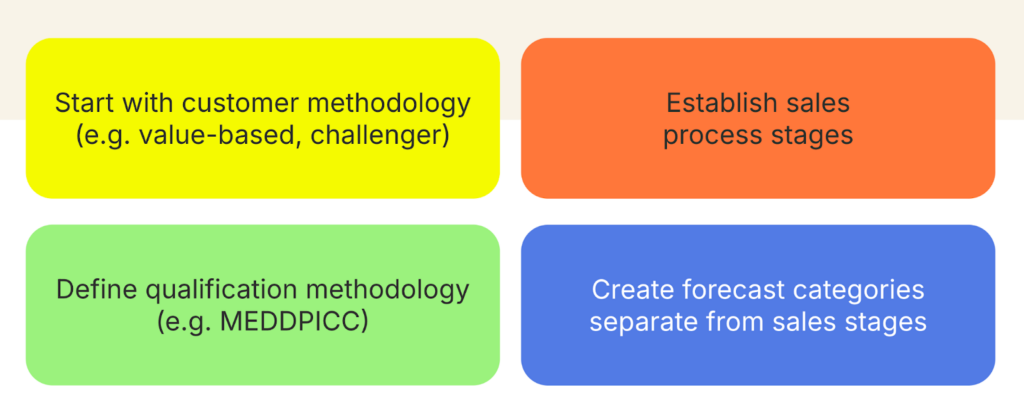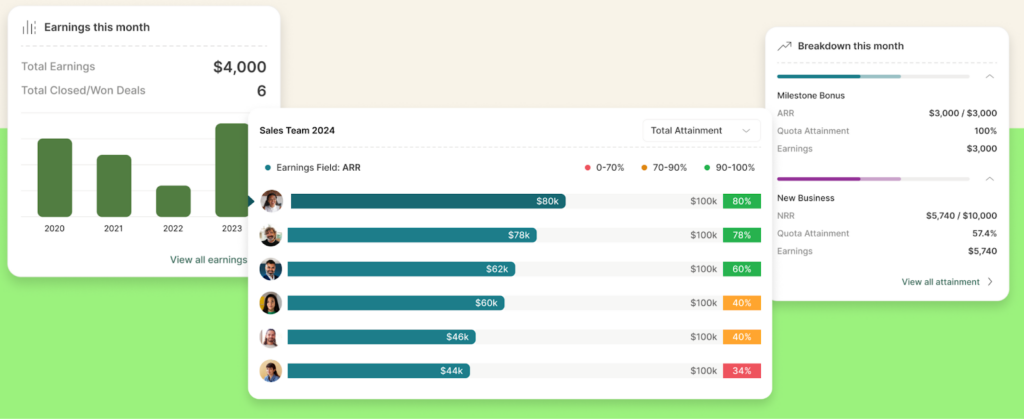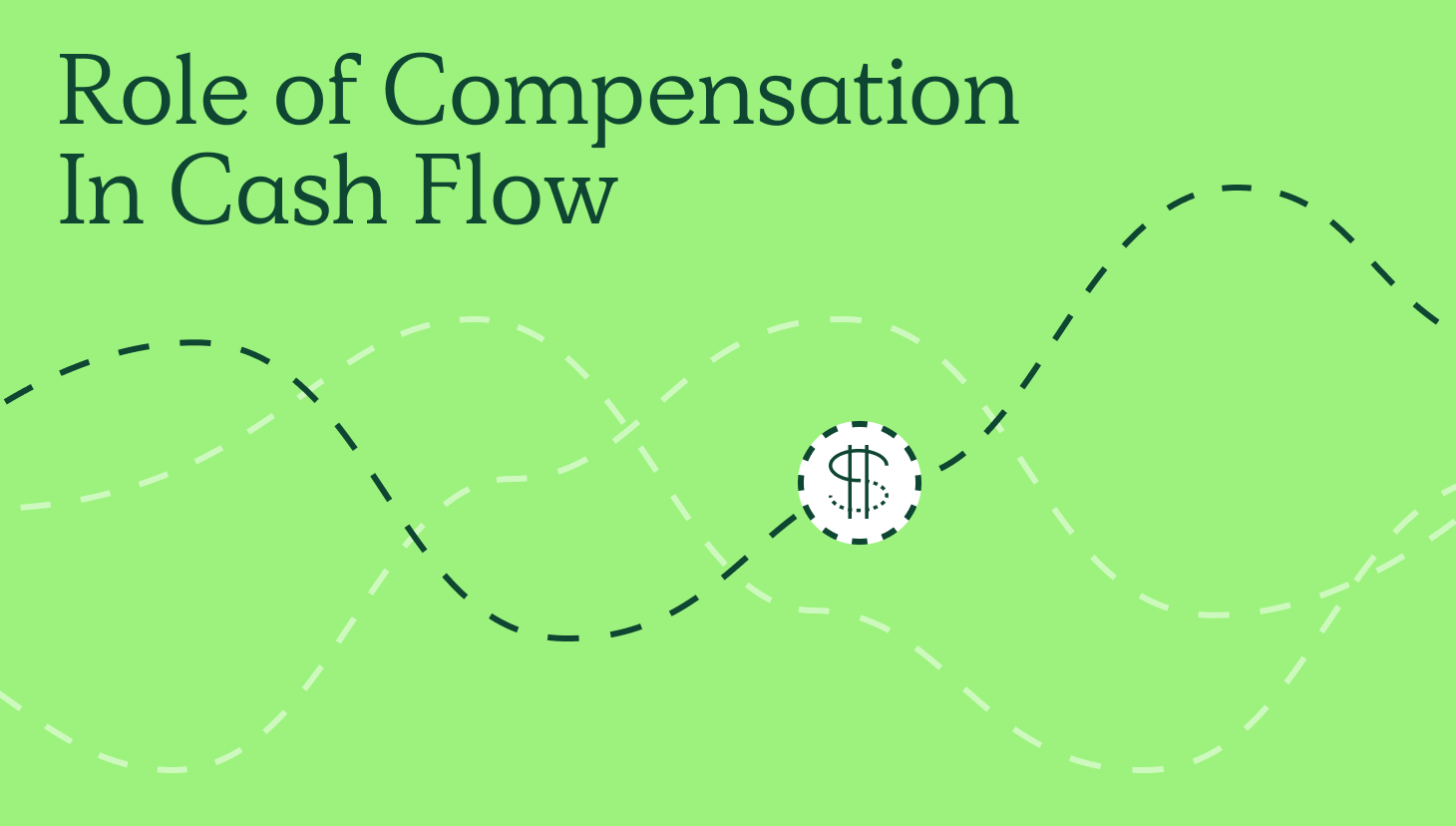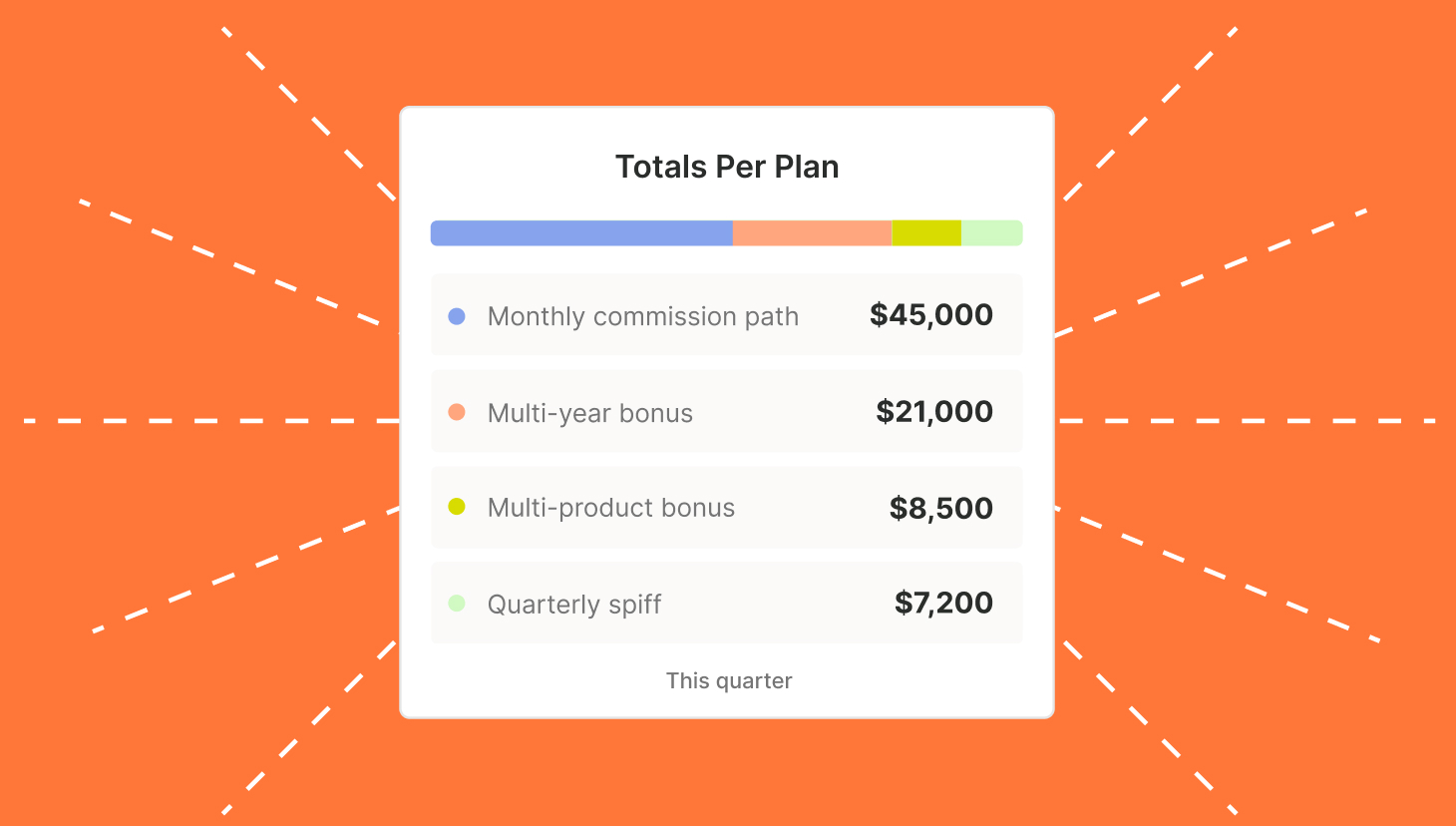In the words of big-time entrepreneur and investor Mark Cuban, “A well-managed pipeline is like a garden. You need to constantly tend to it, weeding out the bad deals and nurturing the good ones.”
— And pipeline reviews are like regular check-ins on your garden’s health.
These weekly, bi-weekly (or some other cadence) meetings help go-to-market teams identify which areas need immediate attention and which are thriving or have the most potential.
Unfortunately, most reps view these meetings as chores or high-pressured meet-ups where leadership picks apart their pipelines and puts reps on the spot.
But pipe reviews are far too important to be viewed as a menace.
“Pipeline reviews directly impact the financial forecast, which is crucial for securing resources like headcount. To expand your team and gain the support of the board, you need to demonstrate that your forecasts are reliable and achievable, ensuring continued investment,” said RevOps Leader and fractional Chief Revenue Officer Anne Pao.
The way to do this is through your pipeline.
And, the way you get your reps onboard is by putting them at the center of it, not to put them on the spot, but instead empower them.
Our CEO AJ Bruno and Anne presented this topic at INBOUND 2024. Below are the main takeaways.
TIP: RevOps, you run the meeting.
Anne Pao
“The person who runs this meeting is RevOps. It is your job to be neutral, to ask the questions that need to be asked, to ask the uncomfortable questions of your sales leader, to ask the unconfirmable questions of your market leader, of your CS leader.
You also are generally the closest to the data and to what lives in the CRM.
You are the connective tissue.”
What Good Pipeline Reviews Share In Common
Building on the importance of tending to your sales pipeline like a garden, effective pipeline reviews are crucial for keeping your deals healthy and on track.
A successful review goes beyond just tracking progress—it provides clarity, fosters collaboration, and ensures the team is aligned for action.
Here are the key elements that all strong pipeline reviews have in common:
Shared Learnings: A well-run pipeline review is a space for continuous learning. It’s an opportunity for team members to share insights from their deals—what’s working, what’s not, and what challenges they’re encountering. These learnings not only help individual reps improve but also enable the entire team to grow by building on shared experiences.
Support and Expertise Offered: These reviews should feel collaborative. When a rep hits a roadblock, it’s not just their problem—it’s a team opportunity to lend expertise. Sales leaders and peers can provide advice, suggest strategies, or even offer direct assistance to help move deals forward. This exchange of support fosters a strong team dynamic and ensures no deal stagnates due to a lack of guidance.
Alignment for Action: A pipeline review isn’t just about tracking progress; it’s about aligning on the next steps. Teams use these meetings to discuss priorities and set clear actions, ensuring everyone is on the same page. Whether following up with a prospect or reworking a deal strategy, these sessions create alignment across the team to drive consistent momentum in the pipeline.
Celebration of Wins: No review is complete without celebrating the victories. Recognizing deals that have closed and milestones achieved keeps morale high. It also reminds the team that their hard work pays off and reinforces the behaviors and strategies that lead to success.
Accountability must exist at all levels, from the rep to the CRO. Everyone, including leadership, should contribute to the forecast and include alignment across marketing, customer success, and even product teams for full funnel visibility. A well-run pipeline review should be engaging and valuable for everyone involved, not just leadership. This fosters ownership and makes it a meeting that people want to attend.
Multi-level Accountability: A good pipeline review creates accountability at all levels. Reps are accountable for their deal progress, managers for coaching and oversight, and leaders for strategic decisions. This multi-level accountability helps everyone drive toward common goals.
Reliable Forecasts: Ultimately, pipeline reviews contribute to building reliable sales forecasts. The team can more accurately predict future revenue by regularly evaluating deal status and progress. This is critical for the company’s broader financial planning and helps secure resources from leadership and stakeholders, such as additional headcount or investments.
What Bad Reviews Share In Common
As important as highlighting what characteristics solid pipeline reviews share, it’s equally important to recognize the common pitfalls that can undermine their success.
Poorly run pipeline reviews can stall progress, drain morale, and result in unreliable forecasts.
Here are some qualities bad pipeline reviews tend to share:
Top-down; no rep ownership: When pipeline reviews are dominated by leadership without involving reps, the people closest to the deals are left out of critical decision-making. This leads to a lack of accountability and ownership at the rep level, weakening the accuracy of forecasts.
Poor CRM hygiene: A lack of clean, up-to-date data in the CRM can cripple pipeline reviews. When deals are not accurately reflected in the system, it’s impossible to make informed decisions about next steps, resulting in wasted time and missed opportunities.
Weak next steps/future actions: A bad pipeline review often ends without a clear action plan. Without defined next steps, deals stagnate, and progress becomes challenging to track.
Anne Pao
“We’re not the CIA, so don’t interrogate the reps. You need to hold them accountable, but find the right balance to ensure it’s not a meeting they fear attending.”
Fear-based interrogation vs. collaborative deal strategy: When reviews feel like an interrogation, it creates a culture of fear rather than collaboration. Instead of working together on deal strategies, reps become defensive, and open dialogue breaks down.
No unified customer methodology: Sales and customer success teams struggle to align without a shared language or process for customer stages. This lack of common vernacular leads to miscommunication and inconsistent deal progression.
Sales only (no full GTM): Pipeline reviews focusing solely on sales and excluding other go-to-market teams—such as marketing, customer success, and product—miss the bigger picture. Effective reviews require input from all relevant teams to drive full-funnel success.
Inconsistent cadence: Pipeline reviews that happen sporadically rather than on a consistent schedule lose their value. Regular reviews are essential for maintaining momentum and ensuring deals are progressing.
Low executive support: When leadership doesn’t actively participate in or support the pipeline review process, it signals to the team that it’s not a priority. This lack of engagement leads to a drop in overall effectiveness and commitment.
Limited transparency: Finally, a lack of transparency—regarding deal status, progress, or strategy—erodes trust within the team and results in misaligned priorities.

Who’s Coming to Pipe Reviews: Host by Function
So, how can we avoid those missteps regarding pipeline reviews? Start by dedicating pipeline reviews specific to the GTM function.
“A lot of traditional pipe reviews just involve one team— the new business team,” said AJ. “That’s such a failure of the organization because, at the end of the day, you’re doing that bottom-up forecasting, and you want to see holistically the entire organization. This is a team sport you want to think about with pipe reviews.”
You could follow this format and cadence for pipe reviews:
- Weekly New Business Reviews (Sales Team):
- Focus: These reviews center on new business opportunities led by the sales team.
- Action: Reps should come prepared with updates and forecasts already in the system. Weekly reviews are ideal to maintain momentum and focus on the next steps.
- For teams where sales also handle upsells, you might combine this review with upsell tracking, though it’s typically best to keep them distinct.
- Bi-Weekly Renewals and Upsell Reviews (Post-Sales Teams):
- Focus: This review targets renewals and upsell opportunities managed by the post-sales side of the business.
- Action: These reviews are critical for identifying customer retention opportunities and cross-sell/upsell initiatives. Customer success teams and account managers should be present, ensuring alignment on long-term customer goals.
- Monthly Executive Pipeline Reviews:
- Focus: Conducted weekly or bi-weekly, depending on your deal cycle, these reviews aggregate the insights from grassroots reps and middle management to create an overarching view for leadership.
- Action: Executives align on the CRO’s forecast and how it relates to the CFO’s financial forecast. These reviews help assess overall pipeline health and strategy, setting the tone for cross-departmental alignment.
- Bi-Weekly Pipeline Generation (Marketing and Cross-Functional Teams):
- Focus: A pipeline generation review ensures that top-of-funnel efforts effectively contribute to pipeline growth.
- Action: Marketing, sales, and customer success teams must collaborate here, especially to analyze marketing-qualified leads (MQLs) and their conversion into sales opportunities (SALs). Address response times and ensure pipeline targets are met.
Pipe Review Best Practices
-
-
- Hold separate meetings for each function
- Keep the reviews tight
- Hold reps and leaders accountable
- Leverage executive influence in key deals
-

Master Forecasting
Mastering forecasting improves pipeline reviews and ensures that your business can hit reliable targets, secure investments, and drive predictable growth.
Methodology Matters: Start by mapping your sales process and lifecycle stages, but remember, stages are not the same as forecasting methodology. Forecast categories—like pipeline, test case, most likely, and commit—should be layered on top at the deal level for more accurate forecasting.
Bottom-Up and Top-Down Forecasting: Effective forecasting includes both bottom-up ownership and top-down analysis. Reps should take ownership of their deals while leadership analyzes trends, conversion rates, and broader financial forecasts to ensure accuracy.
Implement a Reliable CRM: Ensure your CRM is clean and captures key data like win rates, pipeline coverage, and deal progression. This data is critical for financial planning, annual forecasts, and pipeline reviews.
- Tip: Implement QuotaPath so that your reps see their forecasted commissions tied to pipeline.
Accountability at All Levels: Forecasting success hinges on multi-level accountability. Sales leaders should focus on coaching reps while RevOps handles the technical forecasting processes, keeping their roles distinct.
Cadence and Consistency: Pipeline reviews and forecasting meetings should happen consistently to maintain accuracy and momentum. Ensuring regular, predictable meetings fosters better pipeline management and more reliable forecasting.
Customer-Centric Approach: Always consider the buyer’s journey in your forecasting. Understanding their intent and awareness at each stage ensures reps focus on the right opportunities and align with customer needs.

Empower Reps by Tying Commissions to the Pipeline
One of the most powerful ways to engage your sales team and enhance pipeline reviews is by directly connecting their commissions to the deals in the pipeline.
At QuotaPath, for example, every rep uses our system to create a “what if” calculator to visualize and calculate how their deals will impact their paycheck.
By openly discussing commissions and earnings during pipeline meetings, you tap into the natural motivation of your reps.
When they know exactly how their current and future deals translate into personal earnings, they become more invested in accurately forecasting, pushing deals forward, and staying accountable. This transparency can drive better results across the board.
One innovative way to do this is by leveraging tools like our new native app in Sales Hub, which allows reps to forecast their earnings directly inside HubSpot’s CRM. This integration provides instant visibility into how pipeline movements impact their commissions, all in real time.
This feature simplifies the process and eliminates common frustrations, especially with split deals where multiple reps share commissions. In traditional setups, tracking individual earnings accurately across shared deals is hard, leading to mistakes and mismatches in attainment reporting.
By embedding commission tracking directly into your CRM in this first-of-its-kind integration, you empower reps to see exactly where they stand, helping them stay motivated and focused on what matters.
Incorporating this earnings transparency into your pipeline reviews brings a new level of engagement. When reps see that their forecasted deals are directly tied to their commission, it increases their sense of ownership and accountability.
This leads to more accurate forecasting, higher productivity, and a more motivated
Learn what commission actions you can take directly in HubSpot.
Streamline commissions for your RevOps, Finance, and Sales teams
Design, track, and manage variable incentives with QuotaPath. Give your RevOps, finance, and sales teams transparency into sales compensation.
Talk to SalesParting Thoughts
Effective pipeline reviews and forecasting drive predictable revenue and empower your sales team to succeed.
By segmenting pipe review by stakeholder function, mastering forecasting, fostering accountability, and tying commissions directly to pipeline performance, you can ensure that your team stays motivated, aligned, and focused on the right deals.
At QuotaPath, we help you improve your pipeline management and commission tracking.
With features like real-time earnings forecasting directly inside HubSpot’s Sales Hub, we make it easier than ever for your reps to understand their compensation and focus on what matters.
Schedule time with our team to see how we can help you drive better outcomes for your team and your business.



